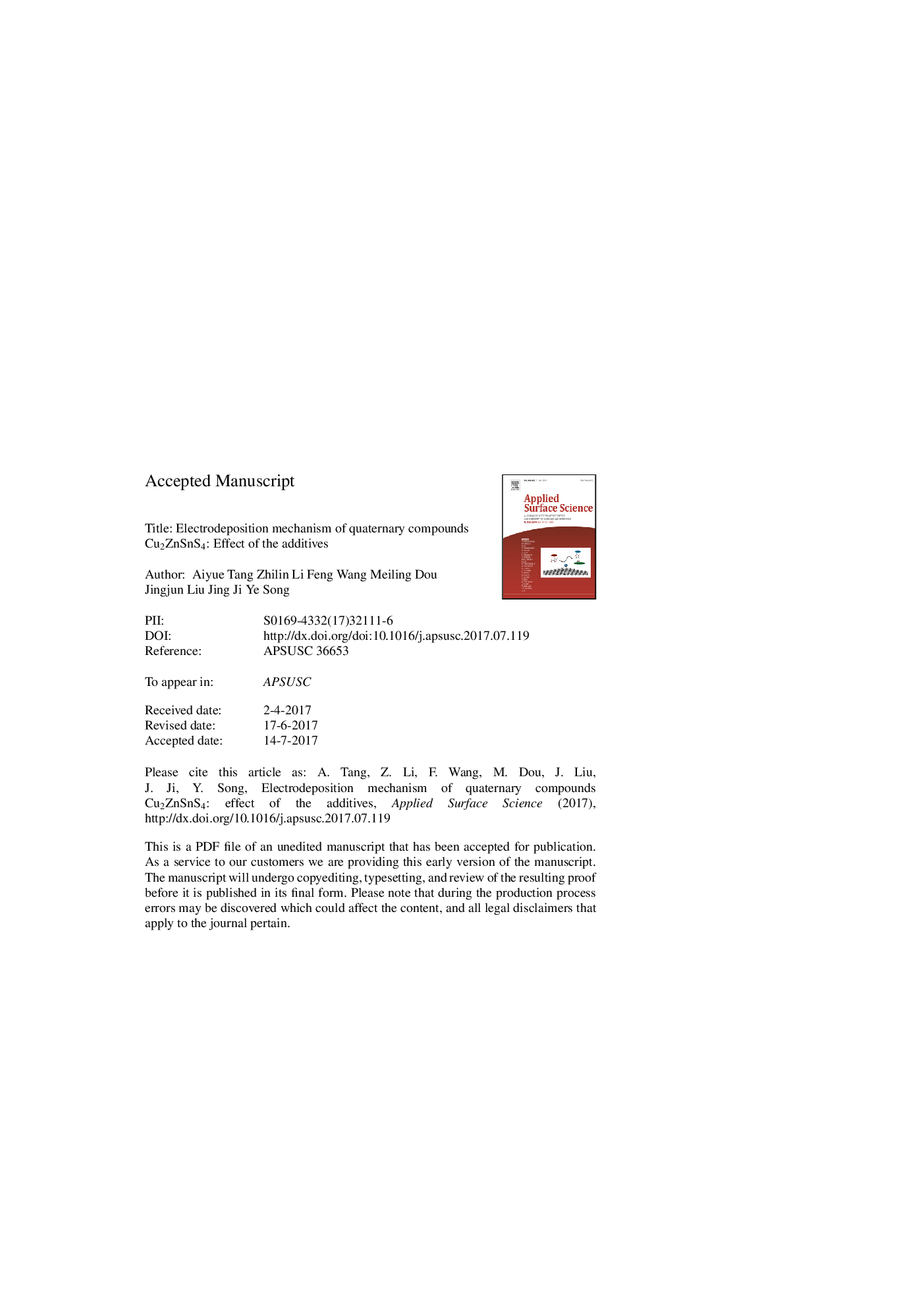| Article ID | Journal | Published Year | Pages | File Type |
|---|---|---|---|---|
| 5346787 | Applied Surface Science | 2018 | 33 Pages |
Abstract
The electrodeposition mechanism of pure phase Cu2ZnSnS4 (CZTS) thin film with subsequent annealing was investigated in detail. An electrolyte design principle of quaternary compounds was proposed. The complex ions of Cu(H2C6H5O7)+, Cu2(C6H5O7)+, Zn(C4H5O6)+, Sn(H2C6H5O7)+ and Sn2(C6H5O7)+, which influenced the reduction process and played important roles in co-deposition, were identified by UV spectra. Electrochemical studies indicated that trisodium citrate and tartaric acid could narrow the co-deposition potential range of the four elements to â0.8 V to â1.2 V (vs. SCE). The cause was the synergetic effect that trisodium citrate inhibited the reduction of Cu2+ and Sn2+ and tartaric acid promoted the reduction of Zn2+. The reduction of S2O32â was mainly attributed to the induction effect of the metallic ions, and the H+ dissociated from tartaric acid could also promote the cathode process of S2O32â. The reaction mechanism could be summarized as the following steps: (I) Cu(H2C6H5O7)+, Cu2(C6H5O7)+ â Cu, Sn(H2C6H5O7)+, Sn2(C6H5O7)+ â Sn, Zn(C4H5O6)+ â Zn; (II) the desorption of (H2C6H5O7)â and (C6H5O7)â, and the reduction of S2O32â induced by metallic ions and H+. The mechanism studies provided a path of electrolyte design for multicomponent compounds.
Related Topics
Physical Sciences and Engineering
Chemistry
Physical and Theoretical Chemistry
Authors
Aiyue Tang, Zhilin Li, Feng Wang, Meiling Dou, Jingjun Liu, Jing Ji, Ye Song,
